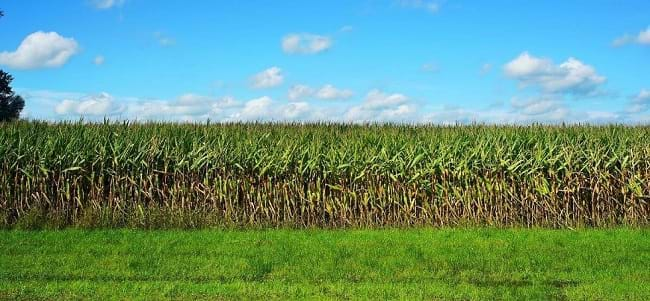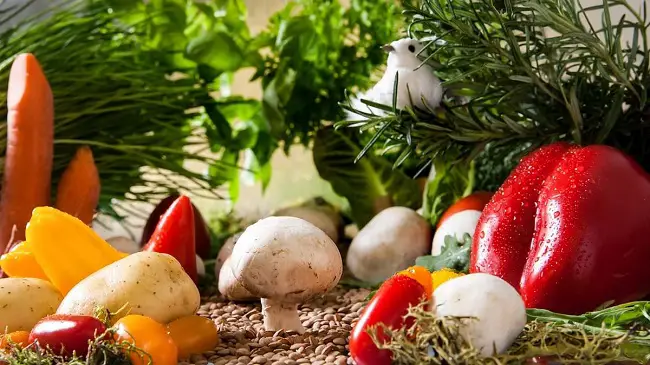The Impact Of Monoculture On Food Security
Disadvantages Of Modern Agriculture

Many farmers like to focus on using monoculture plantations to maximize their profits.
From a financial standpoint, it makes sense for them to focus on crops with high value and government backing.
Having such a firm reliance on only a few species of plants could endanger our food supply.
Most of our primary crops will get produced as monocultures. Even worse, in some areas, the same crops are continually grown on the same land year after year.
What Is Food Security

Enough food is available for everybody to consume consistently.
AccessHaving the appropriate resources so people can get the food needed for a nutritious diet.
Just because a region has a large food supply does not give access. If the residents can not afford to purchase them. They would not have access to the food source.
UsageHaving the necessary foods with access is not enough for food security. It does not provide much help if the people receiving them do not know how to prepare them.
Unfortunately, for many people who live in first world countries, availability is not the problem. For many people, food insecurity is not a food problem.
The issue has more to do with people not having the needed income to purchase a properly nutritious diet.
Impact Of Monocultures
Since around 80 percent of our calories come from approximately 12 different crop species, farmers will generally focus on one of these 12 crop types. This helps to ensure that all their food stock will have buyers for it.
Each year monocropping farms will use the same spot of land. Many also plant the same crop year after year. While many of them will use different variations of the crop. It is still lacking in true biodiversification.
Over time, our soil's fertility and the diversity of the microorganisms in the ground starts to get depleted.
It is estimated that about 33% of the world's farmland will be lacking the essential nutrients for crop production.
With our climate changing and our soil health getting dangerously inadequate. We could be in danger of some of our primary foods going instinct within the next few decades.
Global warming will reduce agricultural production by 2% every decade. Demand is also expected to increase every decade by 14% until 2050.
Having a dependence on only a few crops can put our food supply in a dangerous position. Irelands' reliance on potatoes devastated the country in the 19 century. This caused the Republic of Ireland to lose close to one-quarter of its population.[3]
The water the Irish farmers were using contained the mold Phytophthora infestans. This mold destroyed the leaves and the roots of the potatoes.[4] Massive amounts of their potatoes crops got wiped out from this mold taking hold.
If this were to happen to one of our major crops. It could result in disaster for many of the world's population.
Monocropping Promotes Plant Disease Spread
We are also starting to see disease problems with more of our common crop types.
Specifically, we see a rise in soybean rust, wheat blast and blotch, banana wilt, and cassava root rot.[5]
Monocultures are shown to be increasing the spread of new pathogens and these problematic traits.
While climate change is only one of the problems that our crops are facing. The increasing emergence of fungicide resistance fungi is also a growing cause of concern.
If we start to grow a more diverse set of crops on our farmlands. We can help prevent these fungi from flourishing so rapidly.

Ideally, we should be planting different types of plants that have completely different nutritional needs. This will give our soils the most value.
We should be intermixing different plant types and have them grow together on the same plot of land.
Some crops will use a high amount of nitrogen like Rhubarb. Well, others will add them to the ground(legumes).
Mixing in different crops can help us keep our soil high in nutrients without resorting to synthetic fertilizers.
Biodiversity for food and agriculture should become the foundation and focus of our food systems. It is key to highly productive agriculture, nutritious diets, and environmental sustainability.
Proper biodiversity will not only help to protect our food production. It will also help to prevent contamination of our groundwater from the overuse of synthetic fertilizers.
Plant biodiversity also supports plant pollination and the purification of our air and water. It can help us to naturally fight crop pests and diseases.
Large scale monocultures displace animals from their habitats. Adding nonnative plants is shown to cause water shortages to many local communities.
Water shortages are not only hurting people in third world countries. Small scale farmers are also finding themselves faced with water shortages and contamination from pesticides that the monoculture plantations like to use.
Getting large enough areas with adequate soil health for growing massive monocultures is also leading to other problems. Deforestation and natural habitat loss are increasing as a result of these gigantic farming operations.
Examples Of Monoculture Crop Types
- Wheat
- Rice
- Corn
- Patato
- Soybeans
- Sweet Potato
- Yams
- Cassava
- Sugarcane
- Bananas/Platanes
- Grapes
- Tomatoes
Summary
By farmers focusing on monocultures, they can maximize their profits but leave our food supply vulnerable.
By using biodiversity and intercrop farming methods, we can reduce our chances of mass crop failure.
We may also reduce the total volume of synthetic fertilizers getting applied to our croplands.
Biodiversity also helps us decrease fungi's chance of taking hold of our gardens and our cultivable land. It will also help to keep the nutritional value of our soils high.
This is not just for farmlands, either.
We should make sure that we are using biodiversity in our home gardens. We will see many of the same benefits that cultivable land benefits from.
Similar Articles
Monoculture Farming Benefits and Disadvantages
What is Intercropping and Crop Rotation
Green Manure For Clay Soil
[1]https://www.researchgate.net/publication/222567867_The_effect_of_climate_change_on_crop_wild_relatives
[2]https://www.theguardian.com/environment/2017/sep/26/chips-chocolate-and-coffee-our-food-crops-face-mass-extinction-too
[3]www.my-secret-northern-ireland.com/irish-potato-famine.html
[4]https://www.britannica.com/event/Great-Famine-Irish-history
[5]https://www.nature.com/articles/s43016-020-0075-0
[6]https://nph.onlinelibrary.wiley.com/doi/full/10.1111/nph.12374
[7]https://www.disabled-world.com/fitness/nutrition/foodsecurity/
[8]https://www.bioversityinternational.org/news/detail/biodiversity-loss-threatens-future-of-food/
[9]http://www.carbontradewatch.org/issues/monoculture.html